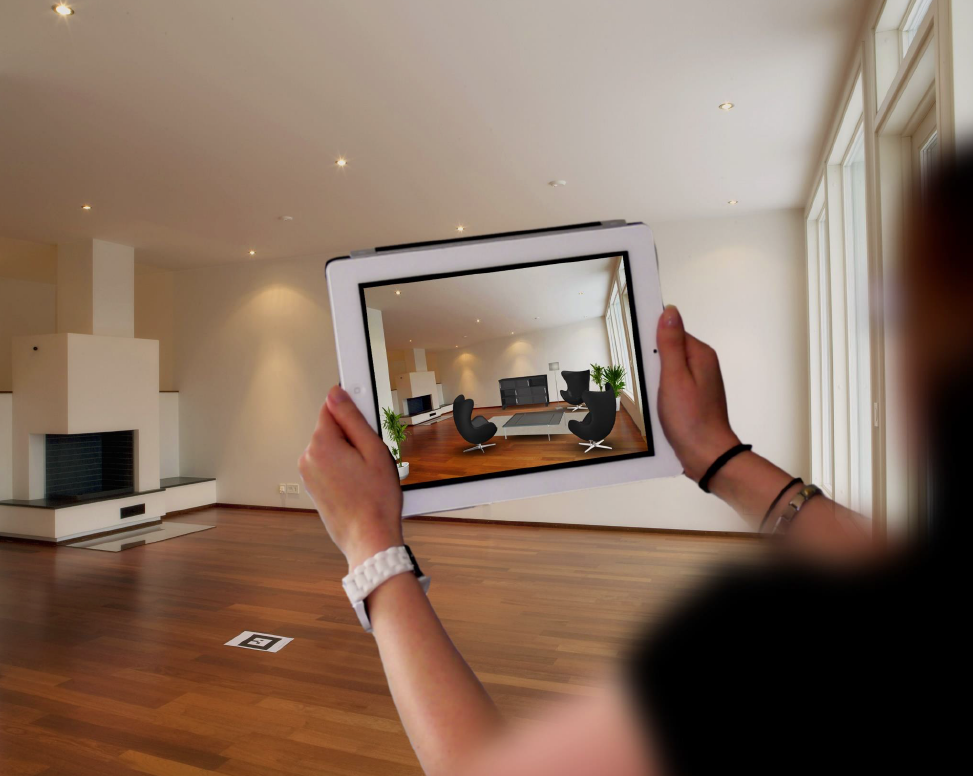Despite all the innovative possibilities offered by online shopping, customers still face daunting challenges in product visualization and determining a right purchase.
– Research from Retail Perceptions[/gem_quote]Even from an investment standpoint, capital investors seem to have been quite optimistic about this trend as the AR/VR ventures raised around $2.5 billion in the year 2017 alone.
With Apple’s ARKit and now ARCore from Google, the AR industry is more empowered than ever to bring new innovations to online shopping. The past two years have witnessed some groundbreaking developments in augmented reality and their applications in the e-commerce arena and here are some significant applications:[gem_list]
- Amazon introduces ‘AR View’ feature. Around two decades ago, it was Amazon who surpassed Walmart by leveraging digital avenues, and even today it’s amazing its customers with its continuous innovations. The e-commerce giant lately launched a new feature in its shopping app, named ‘AR View’ which lets customers see how a particular item will look in their home or office, before actually buying it. The feature works on both iOS and Android platforms.
- IKEA launches ‘IKEA Place’. The Swedish-founded world’s largest furniture retailer IKEA similarly came up with ‘IKEA Place’, an augmented reality application that lets buyers virtually place furnishings around them and check out as they shop first hand. In this app, the products are 3D rendered and true to scale, in order to give buyers the right idea of its size, design, and function. IKEA envisions to take its customer experiences to a whole new level with this new initiative.
- Apple and Shopify partner to bring AR to E-Commerce. Last year, Shopify, a Canadian e-commerce company, revealed that it had created an in-app augmented reality feature for their home and lifestyle brand, Magnolia. Through this AR app, the customers could see how household items would look in their homes using the camera on their phone. Surprisingly, Apple’s CEO got amazed by this development and made a visit to Shopify headquarter, where he was shown various demonstrations that involved iPad and apps built on the ARKit platform. Shopify CEO, Tobias Lutke mentioned the company will use Apple’s ARKit to become the largest AR-enabled e-commerce platform.
- Sephora enables virtual makeup at home. The applications of AR have not been confined to outfits and furniture, but went beyond and touched cosmetics retail business as well. Sephora, a French chain of cosmetics stores, introduced ‘Virtual Artist’ which gives beauty consumers an instant makeover by letting them see what certain products will look like on their face in real time. This was developed in partnership with AR company, ModiFace. ‘Virtual Artist’ allows customers to try thousands of lipstick shades, eye shadows and false lashes through the app, before buying them.
- eBay plans to use AR to enhance the shopping experience. When the other major e-commerce players have already jumped on the AR bandwagon, how can eBay stay behind? The California-based world’s third largest e-commerce company, eBay said it’s working on an AR kit that will make shopping more interactive and enjoyable. It will offer features like letting car purchasers see how the images of new wheels might look on their existing vehicles before they purchase and another similar feature will let the sellers choose the correct packaging box size for a product, by overlaying the box images over the item in real life. The actual cases and other features of this app are yet to be revealed by the company.
SuperDNA 3D Lab is an Augmented Reality and 3D Modelling company with an in-depth expertise in digital technologies, who helps global e-commerce brands to enhance customer experience and increase their sales. We successfully crafted over 10,000 models, specifically for the furniture and ‘Do It Yourself’ market. To know more about our services or Write to us today for any queries.
